This is a free fortnightly newsletter about the New Zealand Net. If you would like to be notified by email when a new edition is published, please contact ZL1NZ.
Browse our Newsletter Archive and List of Net Tips.
Featured key
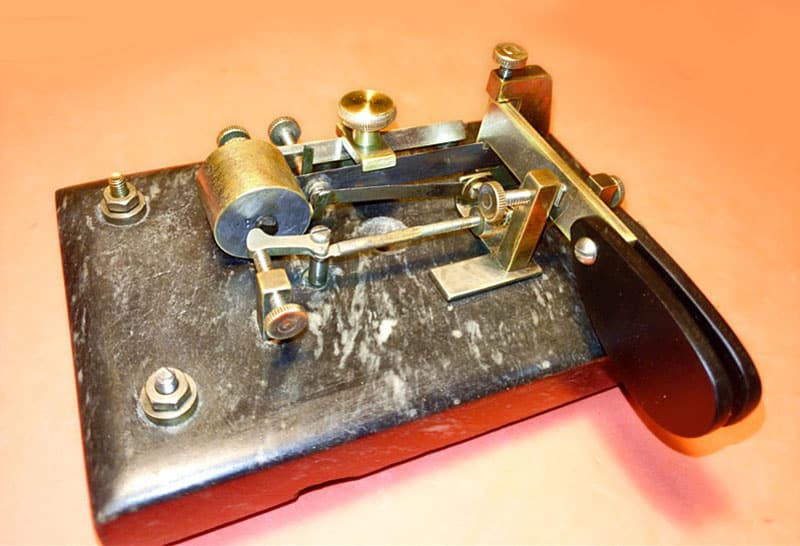
Mecograph spring-release right-angle bug. Photo: Davide IK4DCT
By Davide IK4DCT
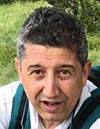 I had never had a Mecograph in my hands, but on eBay I found one. At first, I thought it did not look original but, after careful evaluation, I think the pieces could be original even if there are no brands or factory numbers. I read that Martin, after acquiring the company after the death of the creator of the Mecograph, had made tests with the pieces found to improve the project. I think this could be one of them.
I had never had a Mecograph in my hands, but on eBay I found one. At first, I thought it did not look original but, after careful evaluation, I think the pieces could be original even if there are no brands or factory numbers. I read that Martin, after acquiring the company after the death of the creator of the Mecograph, had made tests with the pieces found to improve the project. I think this could be one of them.
Mecograph keys were produced in the USA, starting in 1904 and they were actually patented a few months before Horace Martin’s Vibroplex bug. From telegraphkeys.com:
“Although they produce automatic dots and manual dashes like a Vibroplex, Mecograph keys operate on a very different principle. Vibroplex keys produce automatic dots by striking the dot lever against a fixed post, causing the pendulum to oscillate from side to side. However with the Mecograph, the dot lever has a spring which puts tension on the pendulum when at rest. When the dot lever is moved, tension is released from the pendulum, causing it to oscillate from side to side just like a Vibroplex. Because of this design, Mecograph keys require less force to operate than a Vibroplex.”
I was not confident this key could sing again because of the oxide blocking all the parts. After several hours I managed to unblock everything and even removed some of the patina that covered it (many people like the patina, and I do too but it was inevitable that while I oiled to unblock, at the same time, all the dirt that has stuck has melted. This is the result.
The differences with the model #6 “Round Weight” are evident:
- the weight is a single melt of lead inside a brass container
- the contact of the lines on the moving part of the blade does not have the classic plate but a contact welded directly
- the vanes are directly connected to the moving part
Otherwise the other pieces could be original. I’m happy but, not being an expert, I hope someone can tell me more.
The weights and relative inertia to be overcome with this system are reduced compared to the system we know with very long lever arms. There are fewer vibrations and greater stability. (See video below.)
* If you have an interesting key for this feature, please send me a nice clear photo and a few words describing it.
Quick notes
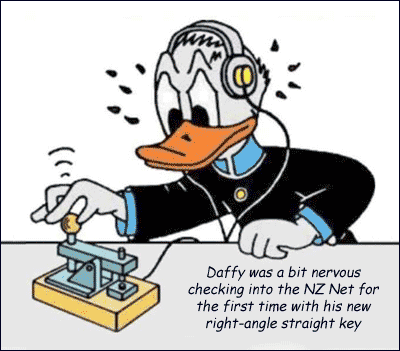
NZ Net operates as usual during holidays. With summer holidays approaching, just a reminder that NZ Net operates every Monday-Friday, including holidays. If you’re around, please check in so your NCS doesn’t get too lonely. If no NCS appears by 2101 hours, then feel free to start the net yourself. Happy Holidays to all.
NZ Net News takes a break. The next edition of NZ Net News will be published on 8 January 2022.
A short history of NZ Net is a new addition to this website. It came about because I was asked how the net had started.
The ZC1 Radio Club website, an extensive source of information about the highly successful NZ-designed World War 2 transmitter/receiver, has gone offline. Webmaster Chris ZL2CU plans to create a new version.
The Ashburton Aviation Museum is hoping to activate its historic radio room during an Aviation and Military Extgravaganza on Waitangi weekend (5-7 Feb), and is looking for CW stations to contact over the air. Planning is in the early stages, but please let me know if you’re interested, and I’ll keep you apprised.
Net numbers
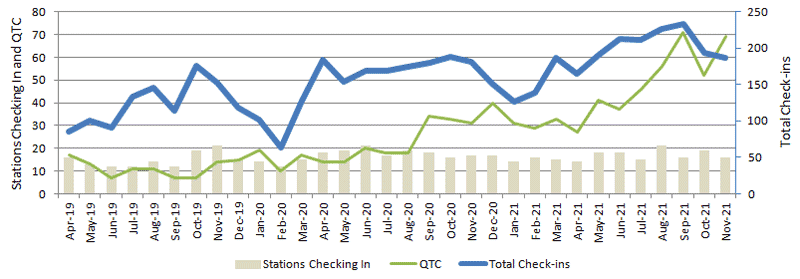
NR R ZL1NZ 41/38 AUCKLAND 0800Z 1DEC21 = NZ NET = NOVEMBER QNI ZL1AJY 7 ZL1ANY 19 ZL1BWG 22 ZL1NZ 22 ZL1PJH 3 ZL1RD 15 ZL2GD 16 ZL2GVA 19 ZL2KE 8 ZL2LN 7 ZL2WT 1 ZL3CW 1 ZL3TK 22 ZL4CU 5 ZL4KX 3 VK3DRQ 17 TOTAL 187 QTC 69 = ZL1NZ
Photo flashback
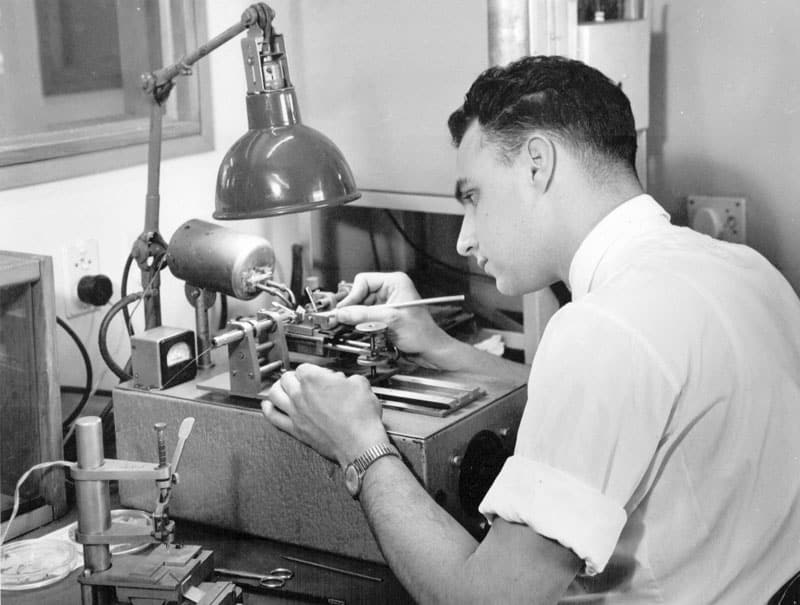
Wiring a crystal at the NZ Post Office Crystal Lab in the 1960s. The wiring machine was designed in the lab. Photo courtesy Chris Underwood and maritimeradio.org
Morse musings
I love Morse because of its precision – for example in copying a message letter by letter.
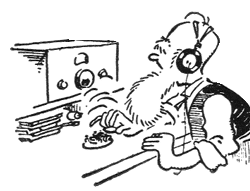
The opinion of ZL1NZ
- di-dah-dit most often means the letter R, but is also the decimal point
- di-dah-di-dah-dit, typically written as <AR>, is the + sign but also the end-of-message signal (which we normally write as ‘+’ if we write it at all)
- di-di-dah-dah-di-dit, typically written as <IMI>, means ‘I repeat’ or ‘Please repeat’ but is also the question mark (but never used as such in a radiogram – that would be truly confusing!)
Can you think of other examples?
Cartoon: Gildersleeve
Video: Mecograph key, operated by IK0IXI
Audio challenge
Who sent this message via telegram and who received it?
Please send your answers via radiogram to ZL1NZ.
Congratulations to the ops who correctly answered the Audio Challenge in Net News 69: G4ETQ, ZL1ANY, ZL2GVA and ZL3TK.
Advertising archive

Suggestions?
If you have suggestions on how to make the NZ Net better, or things you’d like to see covered in these updates, please contact ZL1NZ. You might even like to write something for the newsletter.
Thanks for reading, and I hope to hear you soon on the NZ Net!
—
Neil Sanderson ZL1NZ, Net Manager
New Zealand Net (NZ NET)
3535.0 kHz at 9pm NZT Mon-Fri



